
The last time I was in Haywood County, I stopped to say hello to my friends at the West Tennessee Delta Heritage Center and spent a few minutes in their cotton exhibit. It features artifacts like old plows, fertilizers and planters pulled by mules during the early days of cotton farming in Haywood County. If you haven’t been by to check out all the galleries in their museum, I highly recommend it. Here are a few photos from the center’s collection along with some from my own family.
My visit there got me thinking more about this important crop that few people today really know much about or have even seen growing in person. Depending on who you talk to, cotton conjures up a vastly different set of responses.
Cotton is controversial. From Oklahoma City Thunder play-by-play announcer Brian Davis suspended for saying a player was “out of his cotton-picking mind,” to the Lipscomb University president having to issue an apology after using cotton as centerpieces (in Mason jars, even) at his home for a dinner with students, to a woman receiving death threats for posting criticism of Hobby Lobby’s fake cotton plants, to Kendra Wilkinson being criticized online after filming herself in a cotton field, cotton has become a lightening rod for heated conversations around history, slavery and race.

Photo: Detroit Publishing Company photograph collection at the Library of Congress
Unloading cotton, Memphis, Tennessee, between 1900 and 1915.
Being from a cotton town like Memphis with roots in Haywood County, I’m pretty familiar with what cotton looks like in its various stages, and I’ve grown up hearing family stories of horrible personal experiences picking cotton. The combination of heat, humidity, dirt and the pointy edges, that left your hands bloody and raw, created a torturous experience that most of us today wouldn’t even be able to attempt.
Cotton 101 from my father who has picked his share of cotton by hand.
I’ve ridden in a giant cultivator picking cotton, and I’ve posed with my cousins for a family portrait in a field with the white fluffy balls of fiber as a backdrop.
The fertile West Tennessee soil is one of the primary reasons my ancestors chose to settle there, and it was the value of the cotton they and other settlers began growing in that soil — and that was shipped to the factories up North — that created the insatiable demand for slave labor.
Cotton 101: What does a cotton plant or field look like?
Janice Person, JPLovesCotton
Although most people think of cotton in it’s final mature state, it’s important to remember that cotton has to grow from seed throughout the season to get to that point. And it’s amazing how often I’ve had folks ask me about something they’ve seen in a field as they were driving by…So, I thought I’d put together some photos here, that will help me reply to hopefully lots of interest in southern fields! So let’s look at cotton plants and fields different times of year. More
In his 1929 book, Human Factors in Cotton Culture, Rupert Vance quoting a journalist wrote, “In the Belt — Black, Cotton or Bible, as you prefer — cotton is Religion, Politics, Law, Economics and Art.”
I also like the way David Cohn summed up cotton’s impact on our society back in 1956 when he wrote, “Cotton, more than any other product of our soil or industry, has had powerful and dramatic effects upon American life and history…it is the melancholy distinction of cotton to be the stuff of high drama and tragedy, of bloody civil war and the unutterable woe of human slavery.”
 Photo: Library of Congress
Photo: Library of Congress
Panoramic picture titled “King Cotton” taken by J.C. Coovert in Memphis in 1907.
There was a reason it became known as King Cotton. According to Cotton and Race in the Making of America, from 1803 to 1937 cotton was America’s biggest exported crop and, right before the Civil War it was 60 percent of all exports from America. And 75 percent of the cotton made its way around the world from the bluff of the Mississippi River in Memphis.
Eli Whitney (and likely Henry Ogdon Holmes) had invented the cotton gin (I just discovered that’s short for engine) in 1794, greatly speeding up the process of removing seeds from cotton. As a result, more cotton could be grown profitably and sold to the mills of the UK and in the northern states. This resulted in the need for more slaves, a cruel cycle that continued until the Civil War and emancipation.
In the years after the Civil War, cotton farming remained a staple of the South with poor, sharecropping blacks and whites and the families of small cotton farmers plowing, planting and cultivating, then harvesting the cotton by hand.

It wasn’t until the early 1940s that farmers like my maternal and paternal grandparents finally got some relief with the introduction of mechanical cotton pickers.
Although Samuel S. Rembert and Jedediah Prescott of my hometown of Memphis, Tennessee received the first patent for a mechanical cotton picker, John Rust of Texas gets the credit for inventing what really became the first working mechanical cotton picker.
On August 31, 1936, the Rust picker was demonstrated at the Delta Experiment Station in Stoneville, Mississippi.
Rust’s invention created a lot of national press coverage and surely a glimmer of hope among those spending long summer days in cotton fields but, without the means to create mass quantities of his cotton picker, he was eventually forced to declare bankruptcy.

The Jackson Sun, Dec. 11, 1947
It wasn’t until 1947, when International Harvester opened a new manufacturing plant in Memphis and became the first company to produce a mechanical cotton picker for mass distribution that relief finally arrived.
Although John Rust had been knocked down, he wasn’t out. After World War II, he began working with the Ben Pearson Company of Pine Bluff, an Arkansas company known for archery equipment. Rust’s cotton picker finally achieved commercial success.
A Passion for Cotton Spans Generations
By Clinton Evans, Cotton Farmer, Brownsville, Tenn.I was born Nov. 14, 1959, in Haywood County, Tenn., raised on this farm and spent my childhood in Davie Place — my family’s ancestral home built in the mid-1800s by my great-great-grandfather, John Wesley Davie. My mother, Cynthia Moody Evans, continues to live there today. More
While I think Elvis replaced cotton as “king” in the south, it’s still a big part of the agriculture. A few days ago in Tennessee, Tyson Raper, cotton & small grains specialist, wrote that its time to “ease off the clutch” and start planning the 2018 crop and according to the National Cotton Council, farmers intend to plant 13.1 million acres of cotton in 2018—up 3.7 percent over 2017.

Photo: Dr. Ed Barnes
Dr. Ed Barnes, senior director of agricultural and environmental research, Cotton Incorporated.
Whitney’s cotton gin and Rust’s mechanical picker revolutionized the way cotton was harvested, but it looks like the introduction of revolutionary new tools is not over. Dr. Ed Barnes, the senior director of agricultural and environmental research at Cotton Incorporated, is working on developing “an army of small autonomous robots” that could cover 11 acres a day and go through the field 25 to 30 times in a season. It promises to revolutionize the way cotton is harvested once again.
The horrific and cruel injustice of slavery is almost unimaginable to us living today, but the negative impact to our society and the continued struggle of an entire race for equality is undeniable. So if you’re able to tap into even a bit of empathy, it shouldn’t be a leap to understand why cotton’s contribution to the institution of slavery makes it such a target for anger and resentment.
But ultimately, cotton is just a plant and those who owned slaves to harvest it are long gone. Cotton isn’t going anywhere anytime soon, so how can people who are rightfully angered by the injustice of slavery and those who see cotton as a part of their culture and livelihoods coexist?
I believe the answer is information, communication and education. We need to research, discuss and teach about the horrors of slavery and its impact still being felt today. One good example of that is the recently opened National Memorial for Peace and Justice that reminds us of the thousands of Americans who were hanged, burned, or otherwise murdered by white mobs.
We need to dialog with as much respect and understanding as we can muster, and we need to listen and actually hear both those for whom cotton equals slavery and those living today for whom thoughts of the cotton plant aren’t immediately intertwined with that horrible part of America’s history. For them, it’s a part of their present and their future…autonomous cotton-picking robots and all.

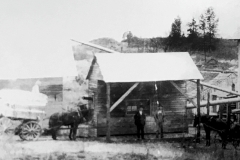
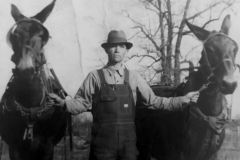
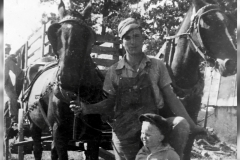
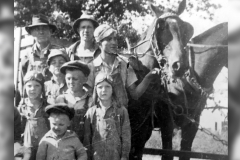
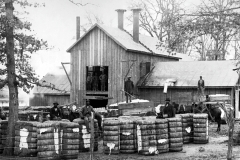
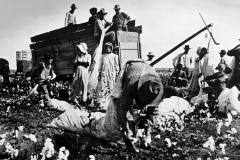
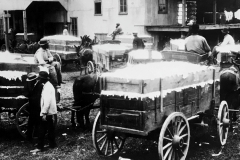
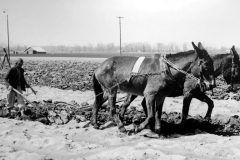
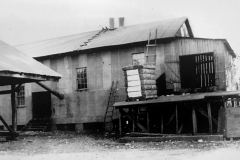

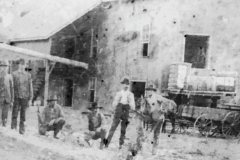

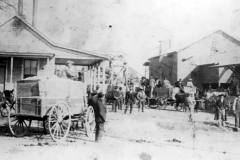

As a West Tennessee city girl who developed a passion for cotton later in life, I really appreciate your giving my blog a shoutout.